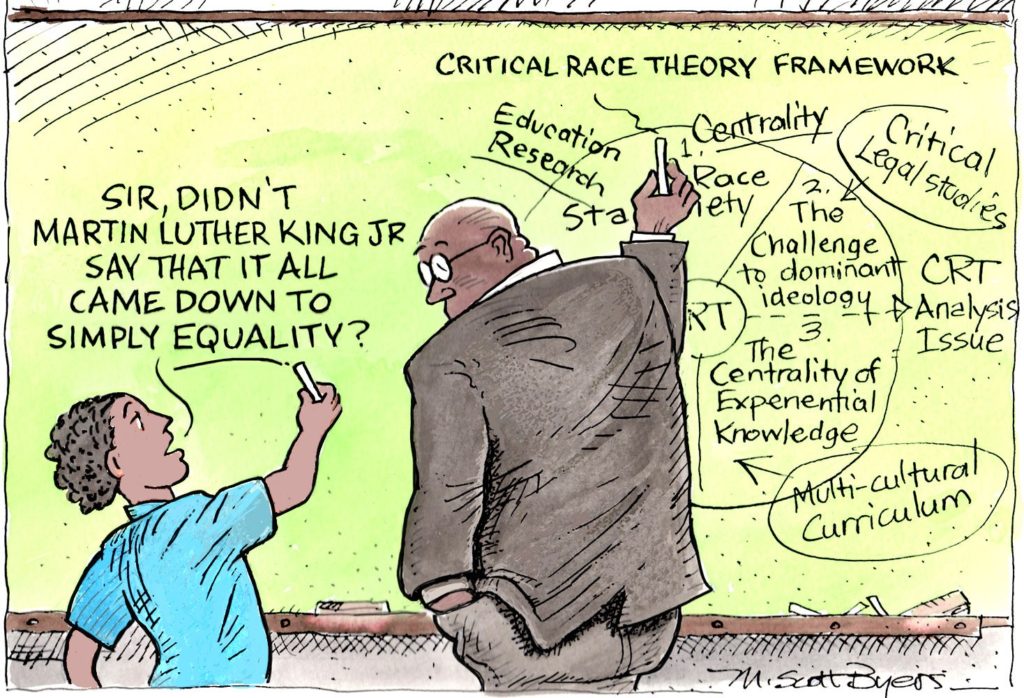Is “critical race theory” a way of understanding how American racism has shaped public policy, or a divisive discourse that pits people of colour against white people? Liberals and conservatives are in sharp disagreement.
The topic has exploded in the public arena this spring—especially in K-12, where numerous state legislatures are debating bills seeking to ban its use in the classroom.
In truth, the divides are not nearly as neat as they may seem. The events of the last decade have increased public awareness about things like housing segregation, the impacts of criminal justice policy in the 1990s, and the legacy of enslavement on Black Americans. But there is much less consensus on what the government’s role should be in right these past wrongs. Add children and schooling into the mix and the debate becomes especially volatile.
Just What Is Critical Race Theory Anyway?
Critical race theory is an academic concept that is more than 40 years old. The core idea is that race is a social construct and that racism is not merely the product of individual bias or prejudice, but also something embedded in legal systems and policies.
The basic tenets of critical race theory, or CRT, emerged out of a framework for legal analysis in the late 1970s and early 1980s created by legal scholars Derrick Bell, Kimberlé Crenshaw, and Richard Delgado, among others.
A good example is when, in the 1930s, government officials literally drew lines around areas deemed poor financial risks, often explicitly due to the racial composition of inhabitants. Banks subsequently refused to offer mortgages to Black people in those areas.

We should teach Critical Race Theory in primary schools
In essence, Schools should introduce Critical Race Theory to kids as young as primary school. CRT is essentially a way to teach history. It is another method and portal to educate people on the issues of race in American society. Introducing that concept to young kids does not corrupt the mind but could educate and mould them into well-rounded adults that understand social construct and plights in the world. It is essential to understand issues that may not affect them directly but indirectly through friends, family members, co-workers, classmates, etc. If one takes away the concept of CRT in schools, kids will lack an understanding of race and topics such as sexism and LGBTQ+.

Although it is understandable for some parents of K-6th grade children to be concerned with the maturity of the content educational institutions teach their children daily, minority children often have those conversations at a young age. Most black and brown American children do not get the luxury of not having a conversation about race; it is their everyday world. Additionally, there are different levels in how educators can teach a subject. It would be counterproductive for a teacher to teach a high school curriculum to a 2nd-grade class. Not everything has to be a negative agenda or displayed negatively. Various training could show teachers how to implement CRT in their lessons without introducing mature content some children may not fully understand at that age.
If boys and girls can learn about Christopher Columbus and The Trail of Tears, then boys and girls can know that racism existed/exist well beyond the Civil Rights Movement. It is not fair to children growing up in today’s society to not learn about events of the past that affect events of the present. Suppressing history to soothe over the underlining truth of America is sad. It does nothing for the children of future generations and the reoccurring issues in present-day America. To truly heal and to change the future, one must understand the past.


